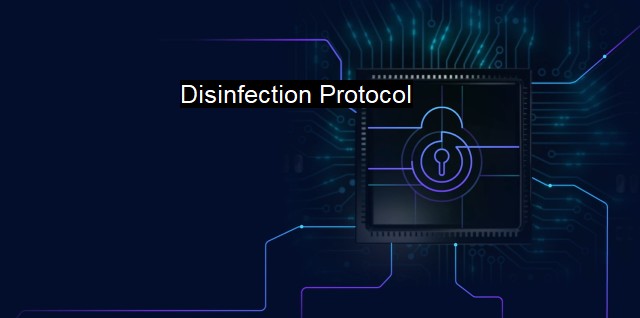What is Disinfection Protocol?
Strengthening Cybersecurity: The Importance of Disinfection Protocol in Today's Digital World - Guidelines Included
Disinfection Protocol refers to a specific set of rules and procedures used to clear, neutralize, or eliminate malicious software (malware) threats, and restore the integrity of a computing system. The purpose of a disinfection protocol is to ensure computer devices, networks, and information systems are secure and free from any contamination that could compromise their operation or the sensitive data they contain.Understanding the malware environment is critical to establishing a highly effective disinfection protocol. Cyber threats vary in nature and intensity, ranging from Trojans, worms, and viruses to more sophisticated forms such as ransomware and spyware. These software programs have the ability to alter, delete, or steal information by exploiting vulnerabilities within the system software.
Implementing a disinfection protocol starts with identifying the presence of malware, often accomplished through the use of antivirus or antimalware software. These digital security tools are designed to scan files, directories, and systems for known malicious patterns and alert the user or system administrator about potential threats. Antivirus software may sometimes be able to handle the disinfection process by itself, but the advanced nature of some malware often requires more comprehensive approaches.
Once malware is identified, its activity must be halted to prevent it from causing further damage. This may require isolating affected systems or devices, which is particularly important when it comes to networked devices where malware can easily spread. At this stage, the disinfection protocol goes hand in hand with a response plan to secure system backups, ensuring the continuation of business operations and support a successful recovery.
Post malware identification and suspension, reverse engineering or threat analysis is done to understand and document its functionality, propagation and persistence methods. This stage primarily handles the removal of afflictive payloads and modules from the system.
Thereafter begins the process of system restoration, sometimes referred to as the "cleaning" stage. In some cases, simple deletion of malware components might be enough, but advanced threats may necessitate a full system wipe or even hardware replacements. Ideally, networks and systems should be fortified with updated antivirus software, firewalls, intrusion detection systems, and regular software patches to ensure similar infections do not occur in the future.
Periodically updating the threat database is crucial to preemptively deflect new variants of malware and cyber threats. Traditional antivirus solutions often function based on virus signatures, or identifiers unique to each malware. Integrating these signatures into the disinfection protocol makes the system capable of recognizing and neutralizing newer threats.
a disinfection protocol is not just about eliminating an immediate threat. It's also crucial for ensuring routine and systematic scanning even in the absence of apparent threats, investing in cyber threat intelligence to analyze emerging trends, and adopting proactive rather than reactive strategies to fight cyber threats. Human actions can often serve as vectors for malware intrusion into systems. As part of a comprehensive disinfection protocol, regular training and awareness development for employees on good cyber hygiene practices, such as phishing awareness, strong password creation, and suspicious email recognition, can prove to be vital.
a well-defined disinfection protocol is a fundamental aspect of cybersecurity. Not only does it endorse the notion of 'prevention is better than cure', but it also infuses it with the idea that 'preparedness can reduce the severity of threats'. Implementing disinfection protocols places organizations at the forefront of the continuous battle against malware and strengthens their protective shields.

Disinfection Protocol FAQs
What is a disinfection protocol in the context of cybersecurity?
A disinfection protocol is a set of procedures that are used to remove or neutralize viruses, malware, and other malicious software from computer networks, devices, and systems.Why is a disinfection protocol important for cybersecurity?
A disinfection protocol is important in cybersecurity because it helps prevent the spread of viruses and malware that can compromise the security and integrity of computer networks, devices, and systems.What are some common steps in a disinfection protocol for cybersecurity?
Some common steps in a disinfection protocol for cybersecurity include disconnecting infected devices from the network, running antivirus software to scan for and remove malware, updating security patches to prevent future infections, and monitoring network activity to ensure that the infection has been fully removed.How often should a disinfection protocol be performed in cybersecurity?
Disinfection protocols should be performed regularly in cybersecurity, ideally on a daily or weekly basis, depending on the level of risk and the frequency of network activity. Regular disinfection protocols can help prevent infections from spreading and ensure that networks and systems are secure and functioning properly.| | A | | | B | | | C | | | D | | | E | | | F | | | G | | | H | | | I | | | J | | | K | | | L | | | M | |
| | N | | | O | | | P | | | Q | | | R | | | S | | | T | | | U | | | V | | | W | | | X | | | Y | | | Z | |
| | 1 | | | 2 | | | 3 | | | 4 | | | 7 | | | 8 | | |||||||